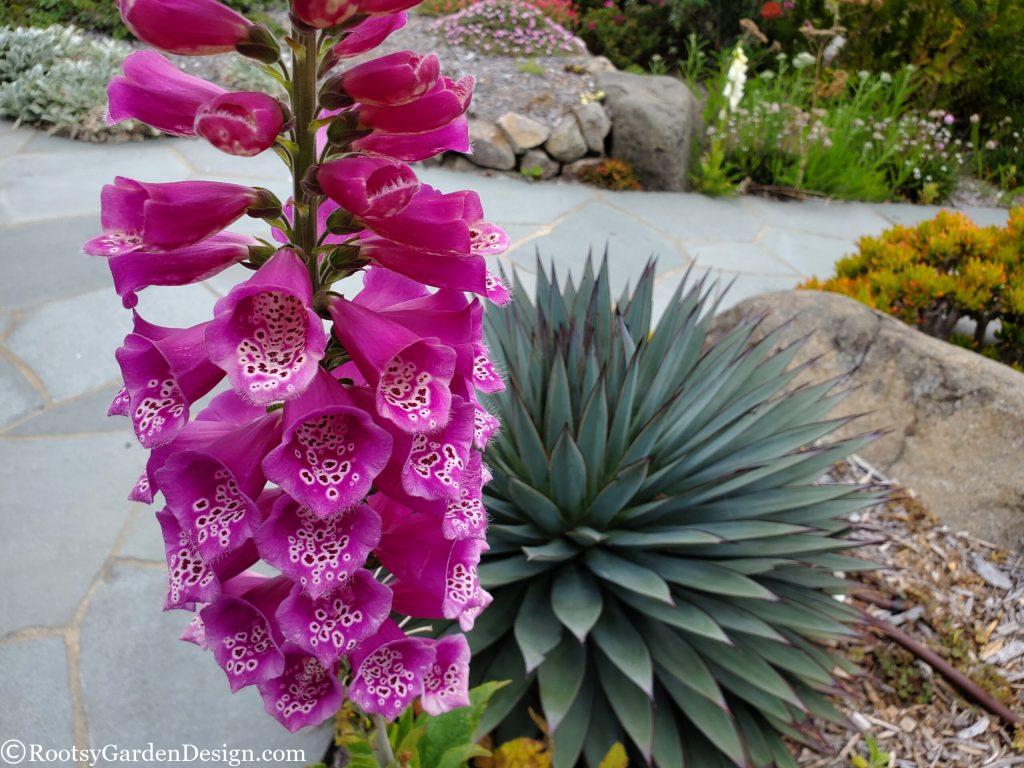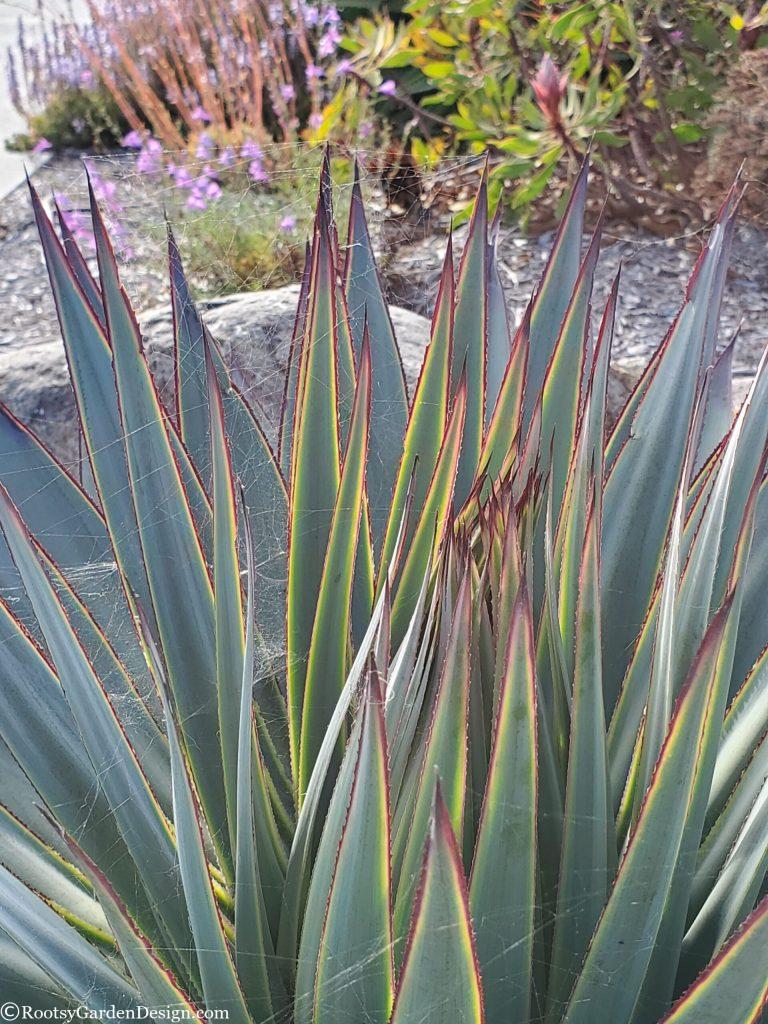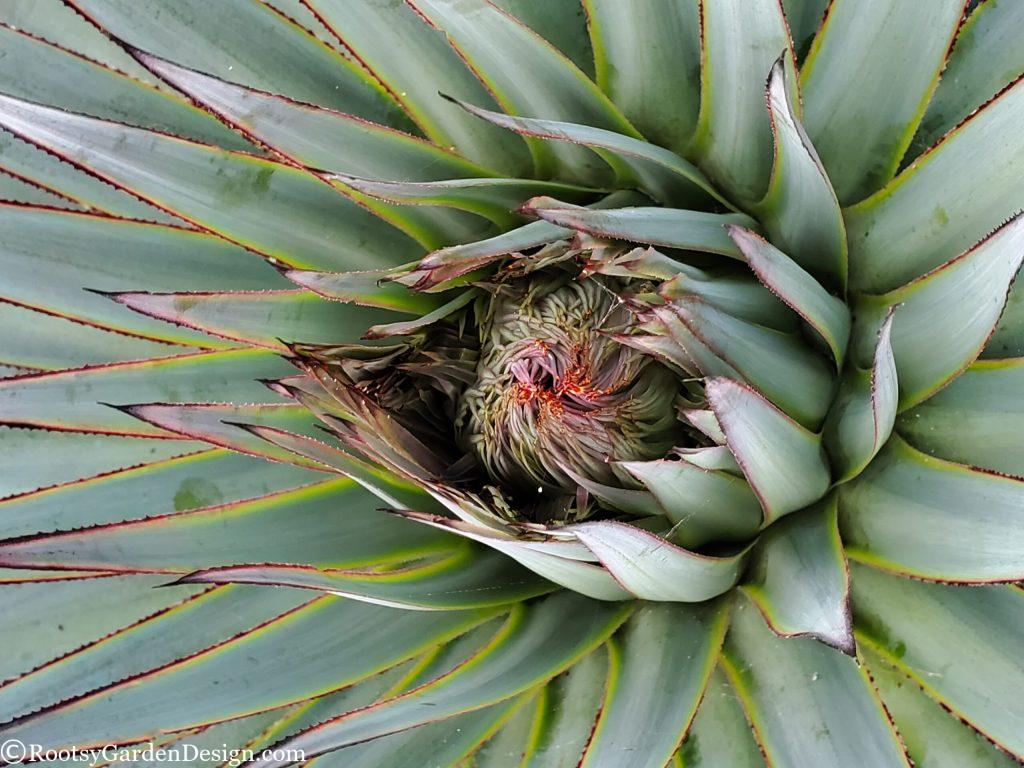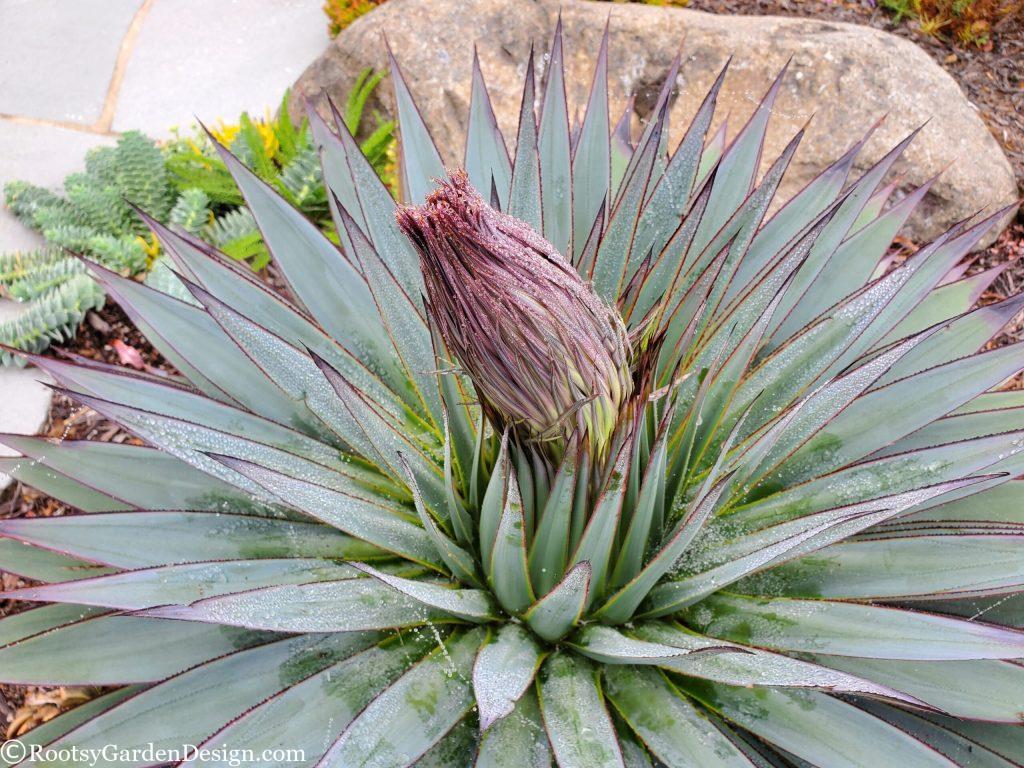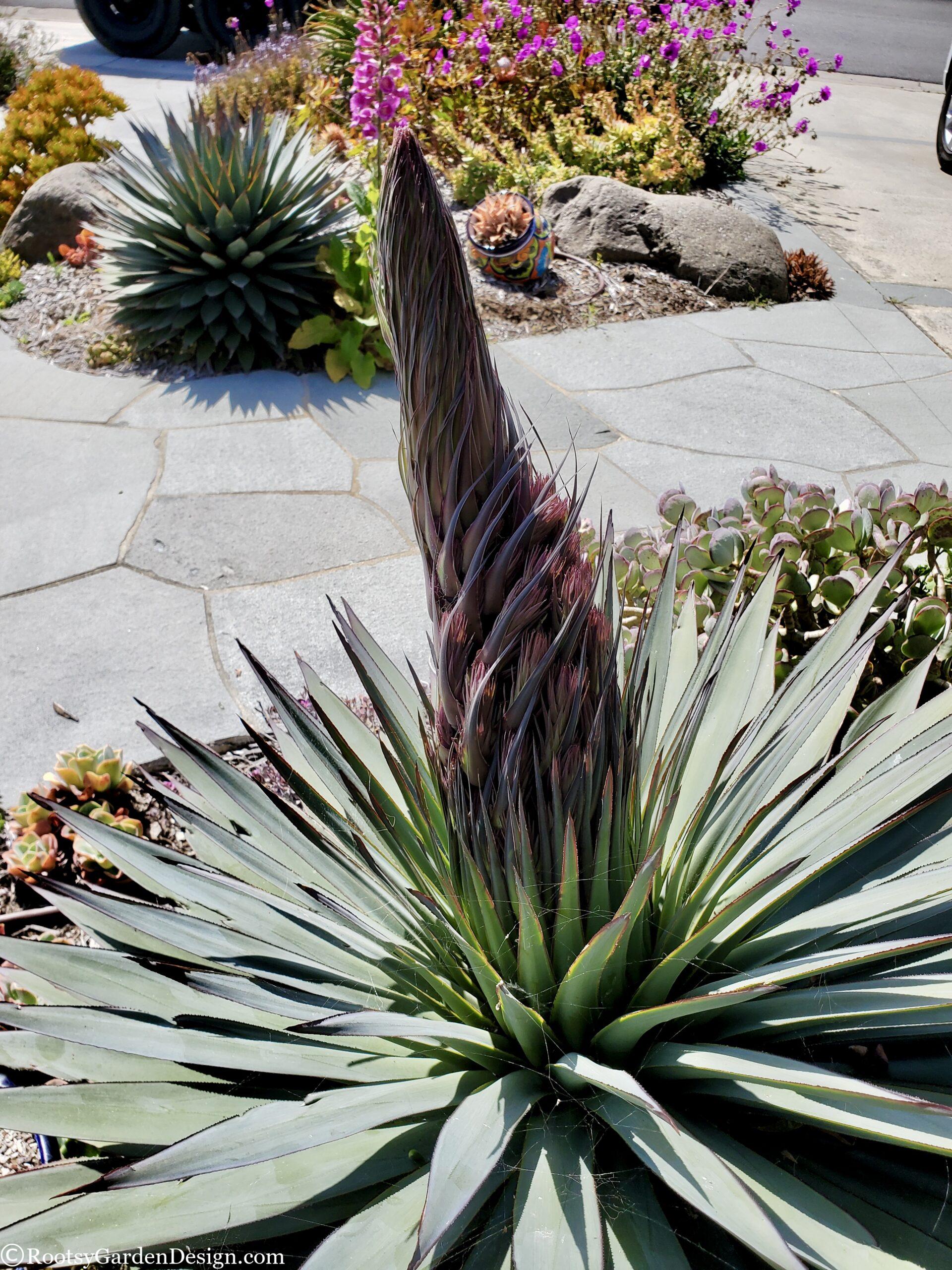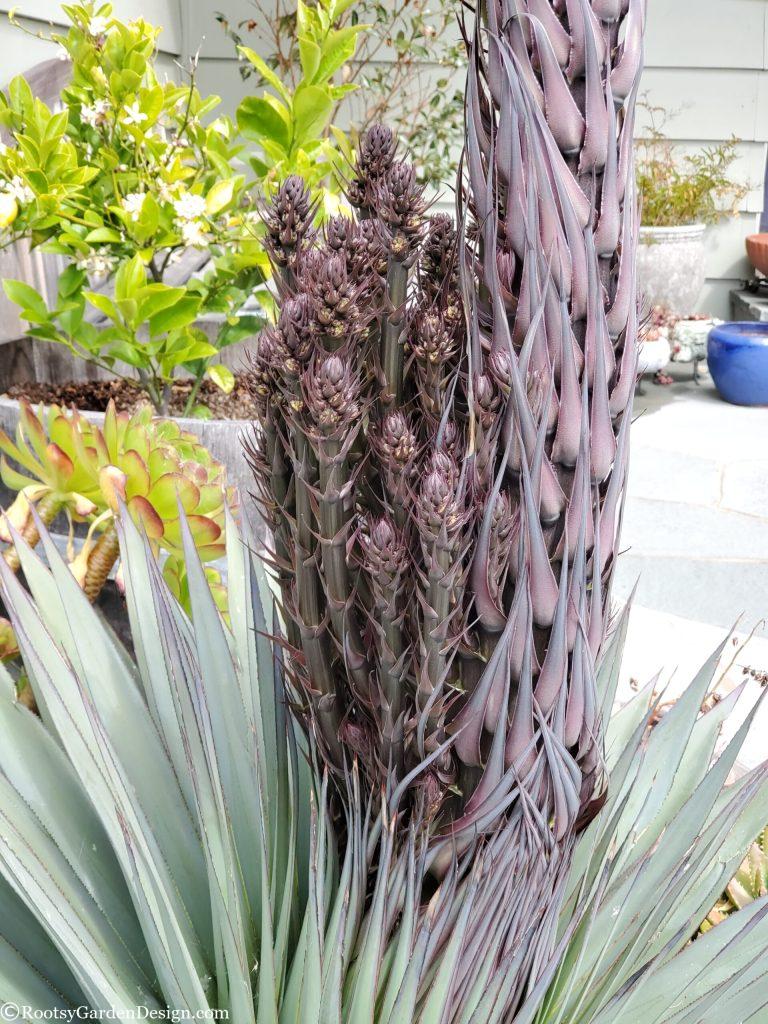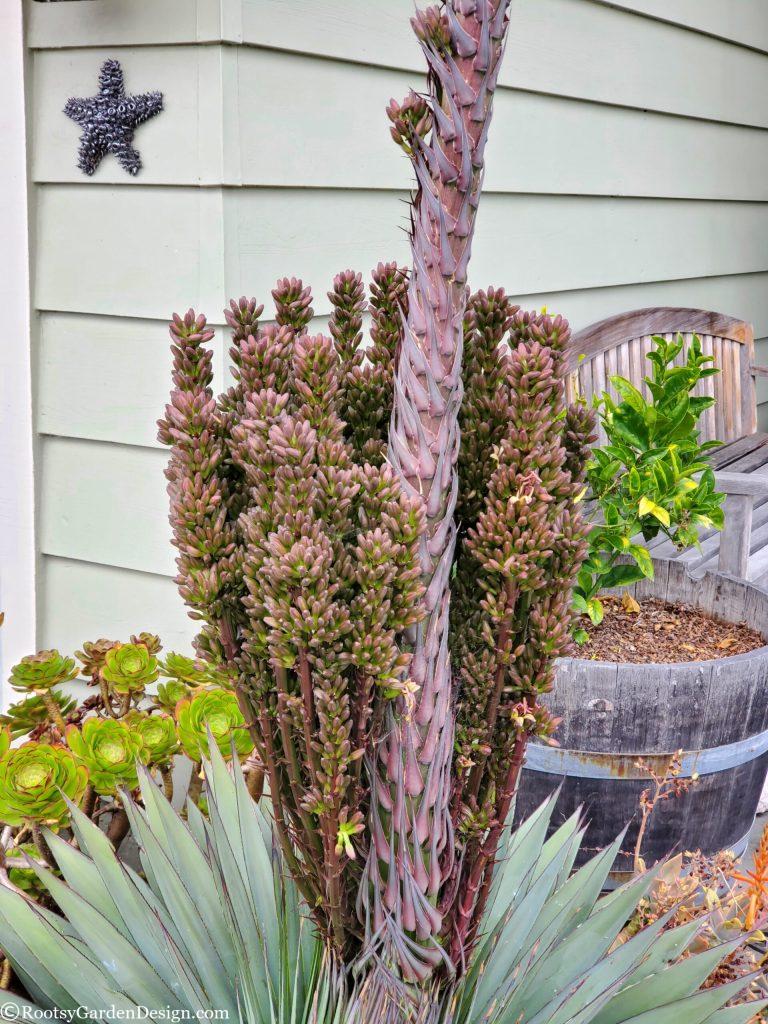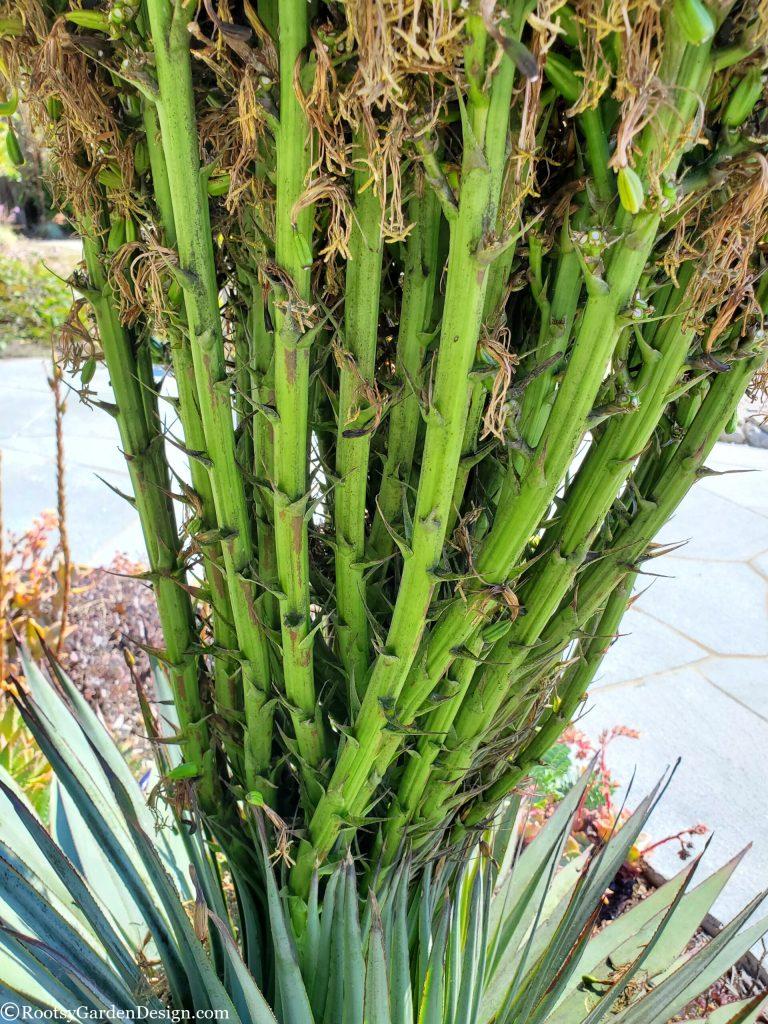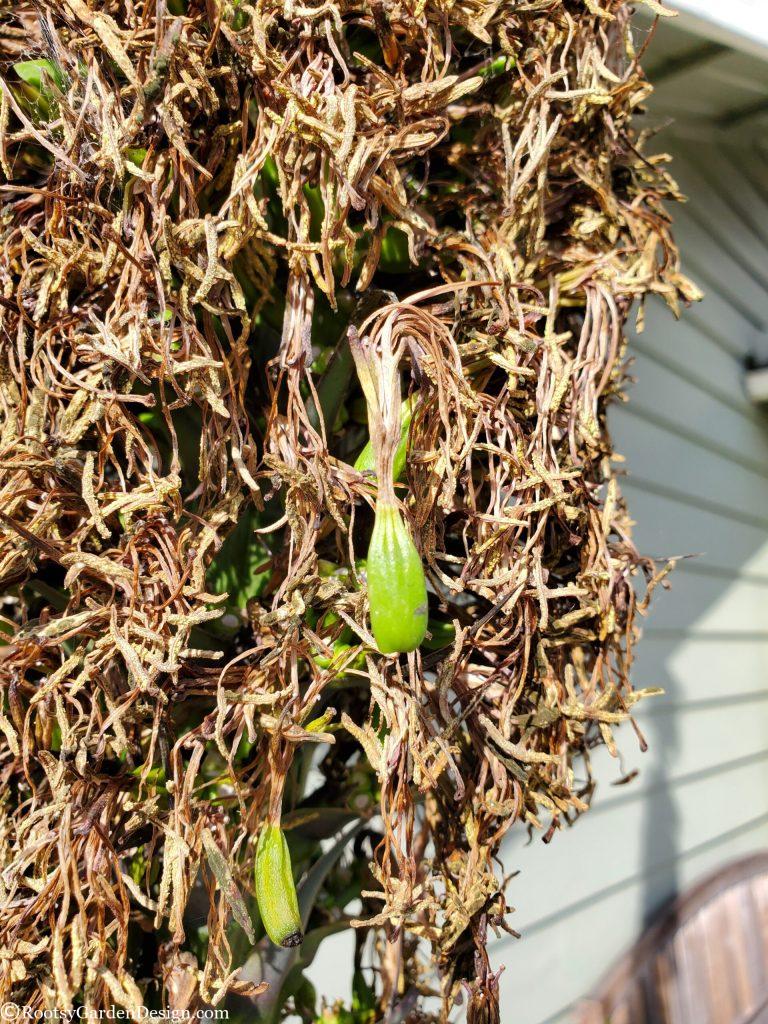What is a monocarpic plant?
If you are growing succulents in your garden, there is a good chance you’re already familiar with monocarpic perennials. Monocarpic plants are those that flower and seed only one time in their life, like annuals (which live 1 year) and biennials (which live 2 years). When the time is right, monocarpic perennials will propagate by transferring all their energy into what is often a very grand flower display. However, this grand gesture is also a grand finale, since monocarpic plants die after they flower. Monocarpic perennials may be part of our landscapes for years, even decades, and then all of a sudden awe us with a magnificent bloom, only to leave us with an empty spot to fill. Some examples you may be familiar with are agave, bamboo, and bromeliads.
The word monocarp originates from Ancient Greek. Mono – meaning “one, single, alone” & Karpos – meaning “fruit.” Plants that flower many times in their life (like redwoods, citrus trees, lavender, etc.) are polycarpic plants. Poly- meaning “many.”
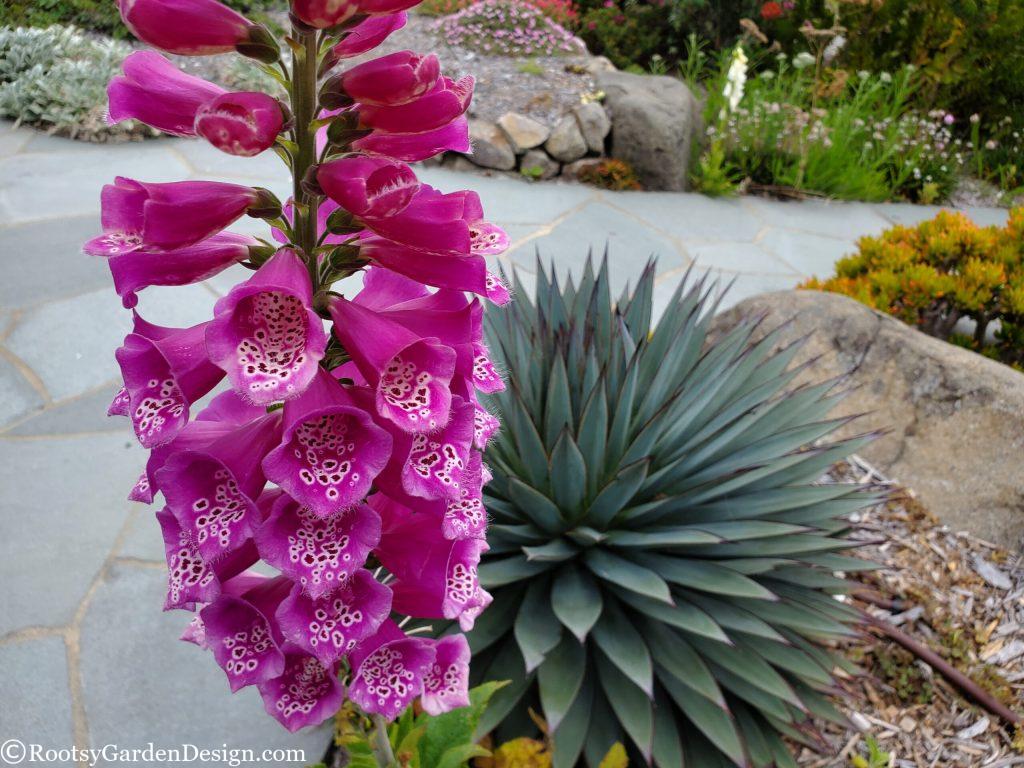
with a Foxglove volunteer
Agave ‘Blue Glow’ is a monocarpic plant that flowers after approximately 8-10 years of life. It is a gorgeous specimen for gardens, with a compact structure and blue-green leaves that “glow” purple and red along the edges when the sun hits them just so. This distinct agave is a hybrid between an Agave attenuata and an Agave ocuhui.
Two Agave ‘Blue Glow’ were planted in this garden 7 years ago. The older one began growing a flower scape (stem) in April, continued to grow in height for almost 3 months, then started blooming in mid-July. After about 1 month of flowering, it began the process of dying.
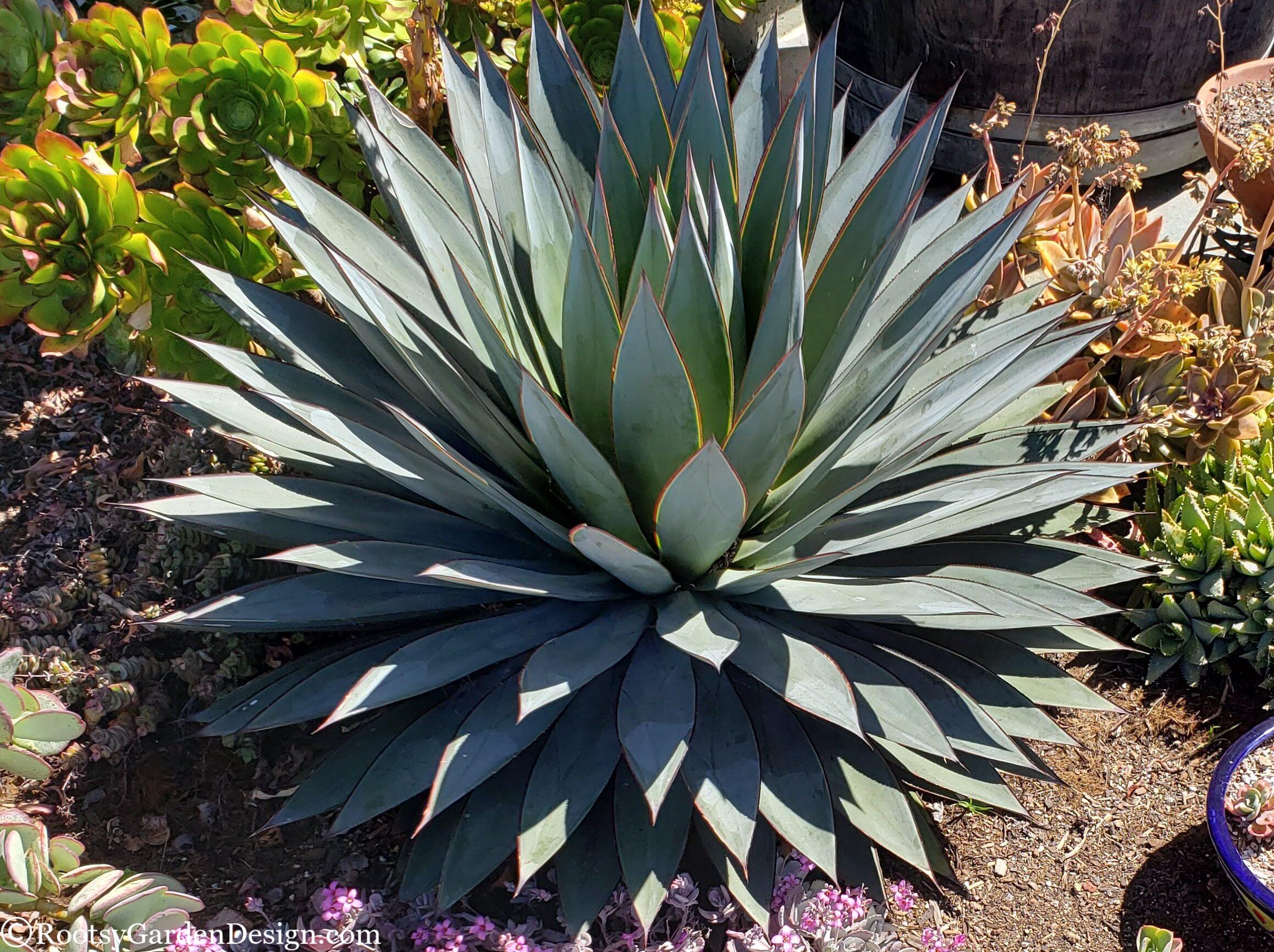
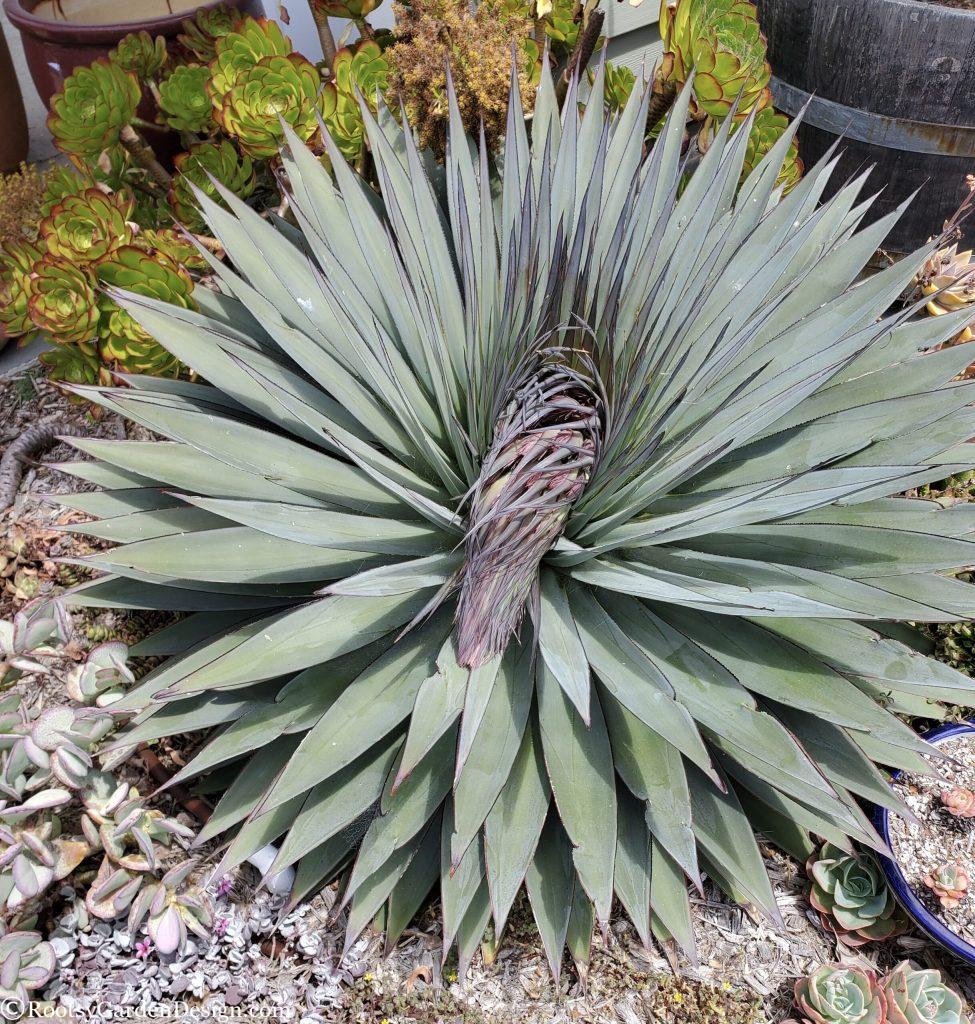
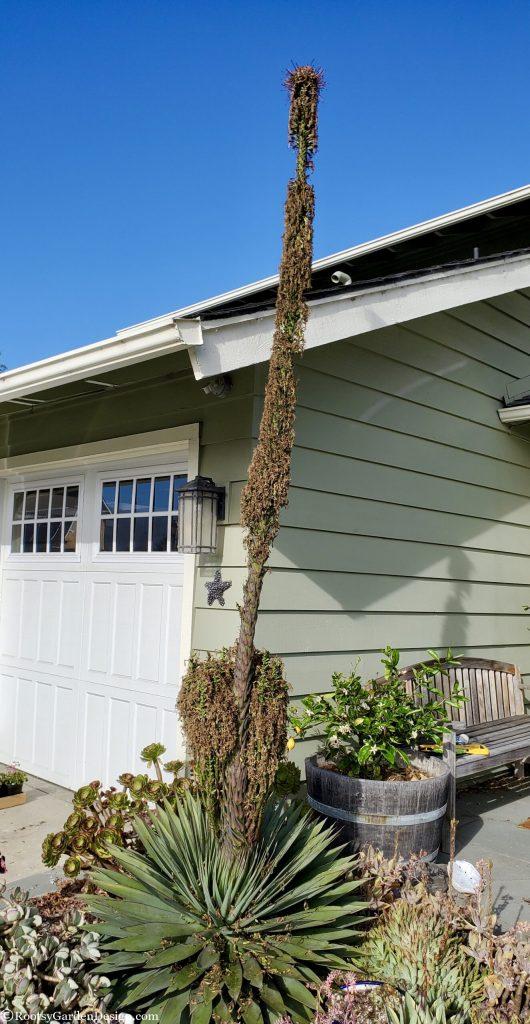

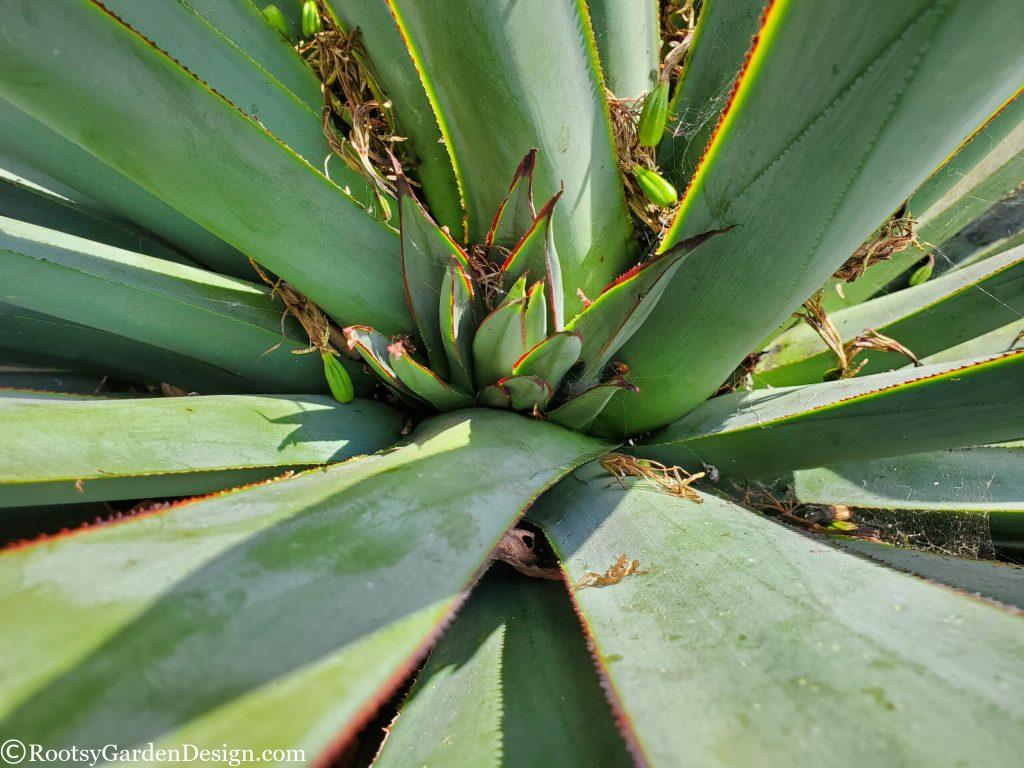
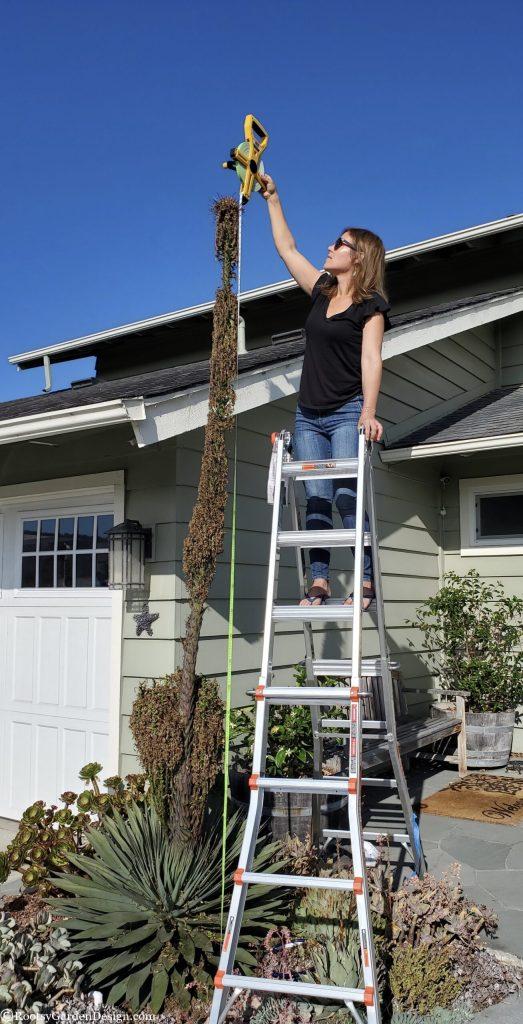
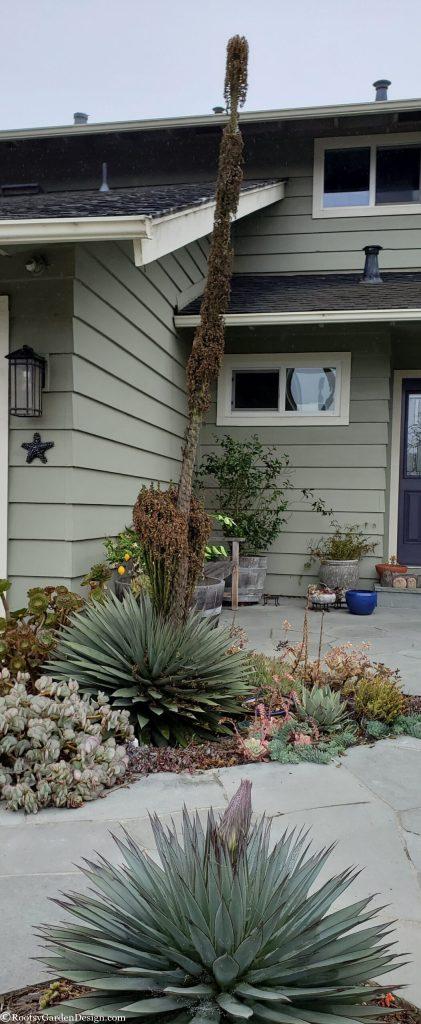
Image gallery of an Agave ‘Blue Glow’ flowering:
